#japan maritime self defense force jmsdf
Text
There is some CONFUSION about the Armed Forces of the Philippines’ (AFP) Participation in the United States (US)-Japan-Australia Joint Naval Drills in the SCS, US could be trying to SHAME the AFP into joining it
#philippines#china#united states us#ayungin shoal#armed forces of the philippines afp#south china sea scs#japan#australia#kyodo+ news agency#chinese communist party ccp#the global times#romeo brawner junior#uss america lha-6#united states navy usn#js izumo ddh-183#japan maritime self defense force jmsdf#hmas canberra l02#royal australian navy ran
0 notes
Photo

Ex. Iron Fist // Japanese Ground Self-Defense Forces
#Japanese Ground Self-Defense Forces#JGSDF#Exercise Iron Fist#Ex. Iron Fist#Iron Fist#Iron Fist 23#Iron Fist 2023#Japan#1st Regimental Landing Team#1RLT#JSDF#Japan Maritime Self-Defense Force#JMSDF#USMC#USN#gunblr#milblr#military#armed forces#Force Design 2030#Howa#Howa Type-20#Type-20#rifle#carbine
17 notes
·
View notes
Video
220921-N-IS471-542 by U.S. Pacific Fleet
Via Flickr:
KADENA AIR BASE, Japan (Sept. 21, 2022) Members of Japan Maritime Self-Defense Force Air Reconnaissance Squadron (VQ) 81 and Fleet Air Reconnaissance Squadron (VQ) 1 pose for a group photo in front of a US Navy EP-3 during Raijin 22-2, an annual unit exchange. Based out of Whidbey Island, Washington, the VQ-1 "World Watchers" are currently operating from Kadena Air Base in Okinawa, Japan. The squadron conducts naval operations as part of a rotational deployment to U.S. 7th Fleet. (U.S. Navy photo by Mass Communication Specialist First Class Glenn Slaughter)
0 notes
Text

JDS Sazanami (DD-113) Takanami-class destroyer of the Japan Maritime Self Defense Force. (JMSDF) 03.20
21 notes
·
View notes
Text
The Owl House Headcanon on Character's Favorite Japanese Dishes.
Luz Noceda: Okonomiyaki (Hiroshima-Style preferred). She likes it for it is a perfect comforting fusion between pancakes and takoyaki (which she had some bad memory from getting her tongue scrouged by it). Plus, she can choose a variety of fillings, which is great for her neurodivergent vibe (while also easily getting bored).
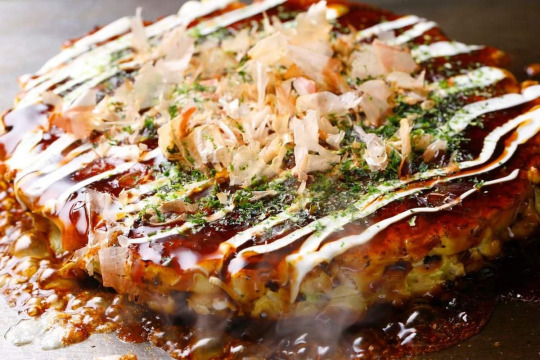
Amity Blight: Zaru Soba. She'd likely go for a dish that is simple yet defines Japanese elements. She would enjoy it with chunky chopped spring onion, wasabi-infused dipping, and hot tea on a side. After a few years of trying more Japanese dishes, she also got into shio udon and yakisoba. (and yakisoba-based okonomiyaki with her sweetheart)
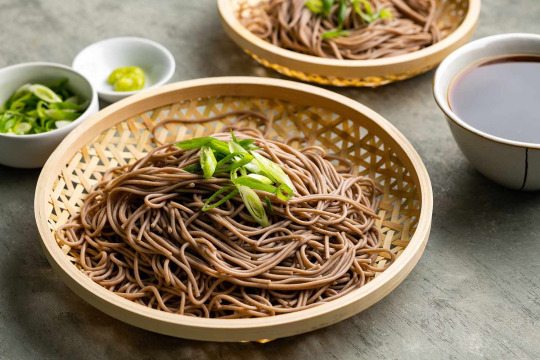
Willow Park: Kimchi Nabe; full of vegetables, proteins from meat, eggs, mushrooms, tofu, and gochujang-rich kimchi (Giving spiciness and Korean-ness that Willow never realized she needed). She loves her nabe with varieties and large quantities of proteins. Especially chicken-based meatballs (like in sumo wrestler Chanko Nabe), chicken breasts, lean slices of beef, and white tofu. Plus, extra spicy.
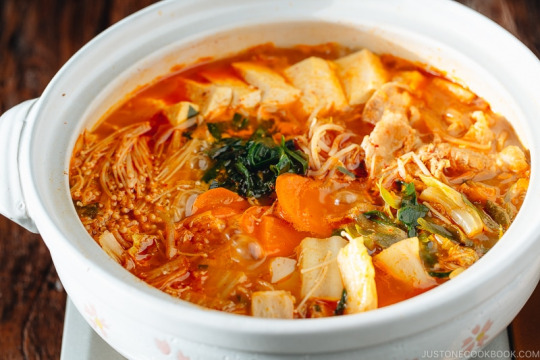
Gus Porter: Omurice with ketchup fried rice underneath a blanket of thin and creamy omelet. He prefers creamy demiglace sauce with mushroom and beef stock base, alongside ketchup and a dash of Kewpie mayo. Maybe steamed bacon with low-sodium, crabstick, or fish sausage for the side protein. Plus, he loves Sanrio and doesn't care about locals' eyes upon him enjoying his two plates of My Melody Omurice.(It's kids' size, so two is it).

Hunter Noceda/Park/Daemonne: Kushiyaki, especially those from old-school Yatai stalls. However, he would avoid poultry-based ones (especially the wings, as tributes to his lifesaver, Flapjack) and alcoholic drinks. He usually goes with beef and vegetables on the same stick. His favorite side drink is Ramune or Calpis yogurt drink. He usually has a few pods of salted edamame first, if offered.

Vee Noceda: Shojin Ryori meal from local Zen Buddhist temples. Somehow, she can tastes 'magic' in food, and enjoy talking about spiritual and morality topics with Buddhist monks(and nuns). She usually not paying them by money but doing them some cleaning and arranging the sutra. She sometimes enjoy draining magic from Omamori (Green one is a yum!).
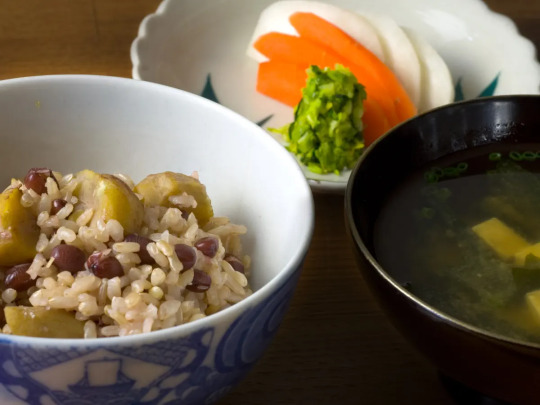
Edalyn Clawthrone: Tantanmen, extra broth, extra noodles, and a few extra pieces of boiled eggs. With rice on the side. After an extreme night (either work, or a party), she carves for carbs, proteins, and spices. Eventually, it becomes her usual comfort dish. Plus, it was worth her two meals and a pretty budget. If she feels extra fancy, maybe some extra meat as well.

Lilith Clawthrone: Kure's JMSDF (Japan Maritime Self-Defense Force)-style Curry Rice, with milk (low-fat, or soya milk) and salad with a light dressing. She prefers a vegetarian version and original taste that serves Japanese maritime forces. She eventually made her own thanks to befriending a friend who was a chef on a Japanese battleship in the Cold War.

King Clawthrone: Set of different sushi varieties. He is into nigiri and maki with a few simple ingredients. He is into a grilled saltwater eel, salted boiled ebi (or tempura-fried), churnchy cucumber, and tamago. Onigiri is also his go-to, but he is not into raw meat.
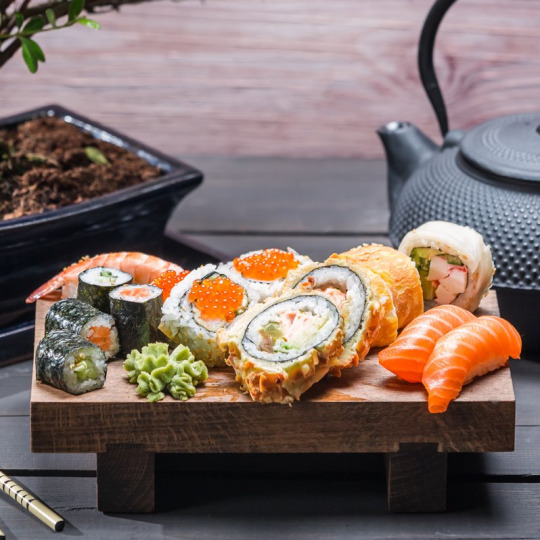
#the owl house#toh headcanon#luz noceda#amity blight#willow park#gus porter#toh hunter#vee toh#headcanon favorite food#japanese food#eda clawthorne#king clawthorne#king toh
27 notes
·
View notes
Text

Japan starts sea tests of its second modified helipter carrier for F-35B jets
Fernando Valduga By Fernando Valduga 12/28/2023 - 22:22 in Military
The Japan Maritime Self-Defense Force (JMSDF) began sea testing for its JS Kaga (DDH 184) helipter carrier after undergoing significant modifications to accommodate F-35B fighters, as announced by JMSDF on December 25.
New images shared on the social media platform X (formerly Twitter), by the service's Escort Flotilla Four depict JS Kaga leaving his pier at the Japan Marine United (JMU) shipyard in the city of Kure, Hiroshima province, to undergo tests at sea.
The Escort Flotilla Four post expressed enthusiasm, stating: "Today's post is about JS Kaga during the sea tests. There is only a little time left until the special modification of JS Kaga is completed! We can't wait!"

The port of origin of JS Kaga is the JMSDF Naval Base of Kure, where the Fleet Four Escort Division is stationed. Although the official date of the sea tests was not disclosed by the JMSDF, an officer confirmed to Naval News that the initial sea tests took place on November 13.
JS Kaga left the JMU shipyard pier in Kure on April 20, marking its first departure in more than a year, after undergoing modifications that transformed its appearance into that of a light aircraft carrier. Notable changes ?? included the modification of the bow section of its cockpit from a trapezoid to a square shape, similar to those of the Wasp class and America-class amphibious assault ships of the U.S. Navy.
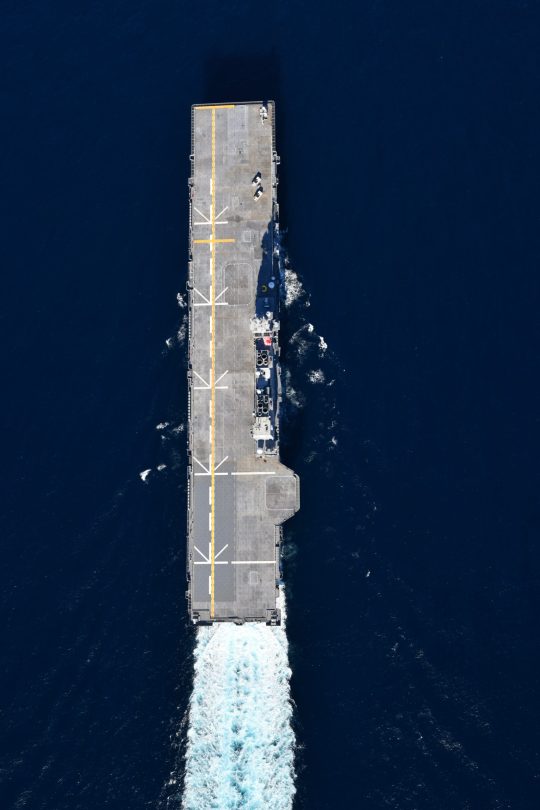
JMSDF plans to complete the modification of its two Izumo-class helipter carriers, JS Izumo and JS Kaga, into aircraft carriers capable of supporting the operations of Lockheed Martin F-35B fighters until fiscal year 2027.
For JS Kaga, the renovation work at JMU's Kure shipyard began in March 2022, involving initial modifications, such as cockpit reinforcement, installation of additional guidance lights, marking of yellow lines in the control cabin for F-35B launches and landings, and incorporating heat-resistant systems at points on the deck for vertical landings. Fiscal year 2023 will see the acquisition of Raytheon's Joint Precision Approach and Landing System (JPALS) and additional modifications to the satellite communication system.

Subsequent and final modifications during the next revision of the Kaga, scheduled to begin at the end of fiscal year 2026, will include changes to the ship's interior compartments.

F-35B during testing on JS Izumo.
Meanwhile, Izumo is expected to undergo modifications to the bow section of its cockpit, transforming it from trapezoid to square during the next fiscal year of 2024, starting in April. The JMSDF allocated $287.3 million for the modifications of the bow section of Izumo in fiscal year 2024 and an additional $4.2 million for the installation of a landing navigation system, which is expected to be Raytheon's JPALS. The Izumo class ships, measuring 248 meters in length and moving 26,000 tons at full load, are the largest Japanese military ships built since World War II, with the capacity to carry up to 14 helicopters.
Tags: Military AviationJMSDF - Japan Maritime Self Defence Force/Japan Maritime Self-Defense Force - Japanese Navyaircraft carrier
Sharing
tweet
Fernando Valduga
Fernando Valduga
Aviation photographer and pilot since 1992, he has participated in several events and air operations, such as Cruzex, AirVenture, Dayton Airshow and FIDAE. He has works published in specialized aviation magazines in Brazil and abroad. He uses Canon equipment during his photographic work in the world of aviation.
Related news
MILITARY
New jet coach for the Russian Air Force
28/12/2023 - 17:00
MILITARY
Elt Group and Leonardo collaborate in the update of the C-27J Spartan electronic warfare set
28/12/2023 - 16:00
HELICOPTERS
Korea Aerospace Industries guarantees contract for second batch of LAH helicopters
28/12/2023 - 14:00
MILITARY
Turkey's ANKA-3 combat drone performs inaugural flight
28/12/2023 - 13:00
INCIDENTS
Indian MiG-29K hunting tire bursts while taxiing
28/12/2023 - 09:00
MILITARY
South Korea signs contract to purchase 20 additional F-35A fighters
28/12/2023 - 08:27
11 notes
·
View notes
Video
220930-N-DW158-1339 by U.S. Pacific Fleet
Via Flickr:
WATERS EAST OF THE KOREAN PENINSULA (Sept. 30, 2022) An MH-60S Sea Hawk, attached to the "Golden Falcons" of Helicopter Sea Combat Squadron (HSC) 12, hovers in front of the Navy’s only forward-deployed aircraft carrier, USS Ronald Reagan (CVN 76), Los Angeles-class fast-attack submarine, Ticonderoga-class guided-missile cruiser USS Chancellorsville (CG 62), Arleigh Burke-class guided-missile destroyer USS Benfold (DDG 65), Republic of Korea (ROK) Navy destroyer ROKS Munmu the Great (DDH 976) and Japan Maritime Self-Defense Force (JMSDF) destroyer JS Asahi (DD 119), as they steam in formation in waters east of the Korean Peninsula. Ronald Reagan, operating as the flagship of Carrier Strike Group (CSG) 5, is conducting a trilateral anti-submarine warfare exercise with the JMSDF and ROK Navy. The operations between the Reagan Strike Group, JS Asahi, and ROKS Munmu The Great, involved operating with a U.S. submarine to enhance interoperability between the nations in support of a free and open Indo-Pacific. (U.S. Navy photo by Mass Communication Specialist 3rd Class Gray Gibson)
8 notes
·
View notes
Text
5/8 Blog
This week we start off by watching episodes 1,3,6, and 7 of the anime series “Zipang” by Kazuhiro Furuhashi. I thought this anime was interesting and blended together themes like history, drama, and moral dilemmas into a captivating narrative. The series is set during World War II and follows the crew of the modern Japanese Maritime Self-Defense Force destroyer, the Mirai. During a routine naval exercise, the Mirai is mysteriously transported back in time to the Battle of Midway in 1942. Faced with the ethical dilemma of intervening in a war that they know the outcome of, the crew grapples with their duty as modern Japanese citizens and the consequences of altering history. One of the most compelling aspects of "Zipang" is its exploration of moral ambiguity. As the crew navigates the complexities of their situation, they are forced to confront the consequences of their actions. Should they intervene and potentially change the course of history, or should they adhere to a strict non-intervention policy? These questions resonate deeply with viewers, prompting them to reflect on the ethical implications of altering the past. For example, In Episode 3, the crew's moral dilemma becomes palpable when Kadomatsu saves an Imperial Japanese Naval officer from a sinking seaplane. This action sparks a divide among the crew, as they grapple with the realization that their intervention may have changed the course of history. Moreover, "Zipang" excels in its portrayal of historical accuracy. The anime was produced in collaboration with the Japan Maritime Self-Defense Force which (JMSDF) making it more authentic and accurate. Director Kazuhiro Furuhashi pays attention to detail, ensuring that the events depicted in the anime remain faithful to real-world history. From the depiction of iconic battleships like the Yamato and Nagato-class battleship to the portrayal of historical figures, every aspect of the show is authentic, adding an extra layer of depth to the story. This anime series was interesting because I feel like we haven’t seen an anime that specifically focused on soldiers during World War II. We watched Barefoot Gen and Grave of Fireflies but those focused more on civilians during the war rather than soldiers.

1 note
·
View note
Text
Japan Maritime Self-Defense Force Advances Aircraft Carrier Conversion with Successful "KAGA" Modification
The Japan Maritime Self-Defense Force (JMSDF) successfully completed the first phase of modifications on the JS Kaga (DDH-184), marking a significant milestone in the conversion of the helicopter carrier into an aircraft carrier. The project, initiated in March 2022, aims to equip the vessel with the operational capabilities required for hosting F-35B aircraft. The completion of the initial modification work on March 29 signifies the JMSDF's commitment to bolstering its naval capabilities. Moving forward, the focus will remain on executing further necessary modifications on the "IZUMO" class destroyer to ensure seamless integration of the short take-off and vertical-landing (STOVL) F-35B aircraft. #military #defense #defence #militaryleak #japan #jmsdf
The Japan Maritime Self-Defense Force (JMSDF) successfully completed the first phase of modifications on the JS Kaga (DDH-184), marking a significant milestone in the conversion of the helicopter carrier into an aircraft carrier. The project, initiated in March 2022, aims to equip the vessel with the operational capabilities required for hosting F-35B aircraft. The completion of the initial…

View On WordPress
0 notes
Text
Commissionato il JS Jingei dalla Marina Giapponese
E’ stato commissionato dalla Marina Giapponese (Japan Maritime Self-Defense Force o JMSDF) il nuovo sottomarino JS Jingei (SS-515) appartenente alla classe Taigei. Il JS Jingei è il terzo sottomarino della classe Taigei; la sua costruzione è stata intrapresa dalla Mitsubishi Heavy Industries nell’ottobre del 2022. Come i due precedenti battelli Taigei e Hakugei anche il Jingei è dotato di due motori diesel Kawasaki 12V25/25SB; invece, dal quarto battello, il Raigei, si procederà ad installare motori diesel Kawasaki 12V25/31 più efficienti. I battelli classe Taigei sono derivati dalla precedente classe Soryu di cui rappresentano un affinamento e miglioramento prestazionale; infatti, i
0 notes
Photo


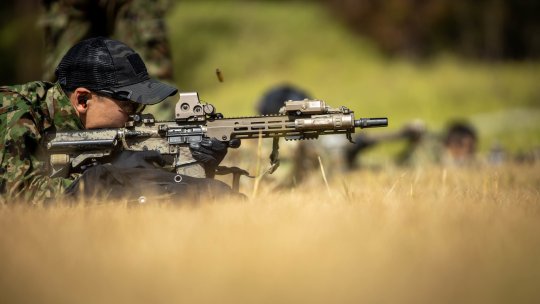

RIMPAC 2022 // Japan Maritime Self-Defense Force
#Japanese Maritime Self-Defense Forces#Japanese Self-Defense Forces#Japan#JMSDF#JSDF#RIMPAC#RIMPAC 2022#joint training exercise#Special Operations Forces#Special Forces#SOF#Military#Armed Forces#Milblr#Gunblr#H&K#HK416
32 notes
·
View notes
Text
Analyzing Japan's Maritime Security and Legal Challenges
Japan's Maritime Security Challenges ===
Japan, as an island nation, has long relied on its maritime resources for economic prosperity and national security. However, the country has been confronted with a multitude of challenges in ensuring its maritime security. This article will delve into the historical context, legal framework, regional dynamics, rising tensions, and future prospects surrounding Japan's maritime security and the legal challenges it faces.
=== Historical Context: Assessing Japan's Maritime Security Concerns ===
Japan's maritime security concerns are deeply rooted in its historical experiences. The country has faced numerous threats, including piracy, territorial disputes, and maritime terrorism. The devastating attack on Pearl Harbor during World War II further intensified Japan's concerns about maritime security. Post-war, as Japan rebuilt its economy, it increasingly relied on maritime trade routes, making the protection of sea lanes vitally important. Additionally, the proximity of the Korean Peninsula and the East China Sea further complicate Japan's security challenges.
=== Legal Framework: Analyzing Japan's Maritime Security Laws ===
To address its maritime security concerns, Japan has developed a comprehensive legal framework. The Japan Coast Guard Act plays a crucial role in maintaining maritime security, including law enforcement, search and rescue operations, and protecting marine resources. Additionally, Japan's Maritime Security and Defense Forces Act allows for the deployment of the Japan Maritime Self-Defense Force (JMSDF) in the event of maritime security threats. These legal measures highlight Japan's commitment to safeguarding its maritime interests within the bounds of international law.
=== Regional Dynamics: Evaluating Japan's Position in East Asia ===
Japan's position in East Asia significantly impacts its maritime security. With China's rise as a regional power and its assertive maritime claims, Japan has found itself in a complex security environment. Territorial disputes, such as the ongoing tensions with China over the Senkaku/Diaoyu Islands, have further strained Japan's maritime security. Furthermore, North Korea's unpredictable behavior and nuclear ambitions pose an additional threat to Japan's maritime security. Japan's alliances, particularly with the United States, play a vital role in deterring potential aggression and ensuring stability in the region.
=== Rising Tensions: Exploring Recent Challenges to Japan's Maritime Security ===
In recent years, Japan has faced numerous challenges to its maritime security. Chinese maritime activities in the East and South China Seas have raised concerns about potential encroachment on Japan's territorial waters. The increased presence of Chinese coast guard ships near the disputed islands has heightened tensions between Japan and China. Furthermore, North Korea's ballistic missile tests and nuclear programs have raised the risk of potential maritime security incidents. Cybersecurity threats and the proliferation of illegal fishing activities also pose significant challenges to Japan's maritime security.
=== Future Prospects: Forecasting Japan's Maritime Security Strategies ===
Looking ahead, Japan is likely to continue prioritizing its maritime security. The country will enhance cooperation with like-minded states, such as the United States and regional partners, to counter maritime challenges effectively. Investment in advanced surveillance technologies and maritime patrol capabilities will be crucial in monitoring and responding to potential threats. Additionally, Japan will continue to advocate for the rule of law and peaceful resolution of maritime disputes through international forums. The ongoing modernization of Japan's defense forces and continuous engagement in regional security initiatives will contribute to maintaining a robust maritime security posture.
===OUTRO:===
Amidst the evolving regional dynamics and rising tensions, Japan's maritime security remains a top priority. Through a well-established legal framework, strategic partnerships, and proactive measures, Japan is poised to address the challenges it faces. By navigating the complexities of the East Asian region while upholding international norms and pursuing peaceful resolutions, Japan aims to secure its maritime interests for the benefit of its economy, national security, and regional stability.
Read the full article
#AnalyzingJapan'sMaritimeSecurityandLegalChallenges#FutureProspects:ForecastingJapan'sMaritimeSecurityStrategies#HistoricalContext:AssessingJapan'sMaritimeSecurityConcerns#Japan#Japan'sMaritimeSecurity#LegalFramework:AnalyzingJapan'sMaritimeSecurityLaws#RegionalDynamics:EvaluatingJapan'sPositioninEastAsia#RisingTensions:ExploringRecentChallengestoJapan'sMaritimeSecurity
0 notes
Text
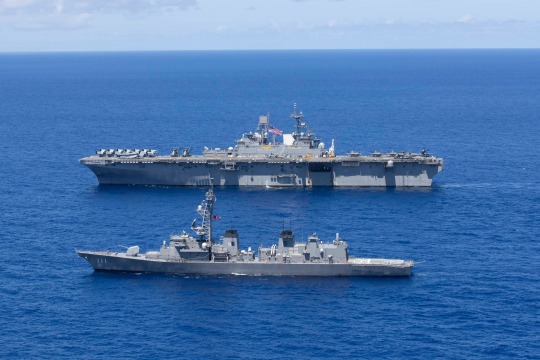
PHILIPPINE SEA (Aug. 23, 2022) – Amphibious assault carrier USS Tripoli (LHA 7) sails alongside Japan Maritime Self Defense Force (JMSDF) destroyer JS Ohnami (DD 111), Aug. 23, 2022. Tripoli is operating in the U.S. 7th Fleet area of operations to enhance interoperability with allies and partners and serve as a ready response force to defend peace and maintain stability in the Indo-Pacific region. (U.S. Navy photo by Mass Communication Specialist 2nd Class Malcolm Kelley)
20 notes
·
View notes
Text
Japanese Warships Return Home Following First Phase of Indo-Pacific Deployment - USNI News
0 notes
Text
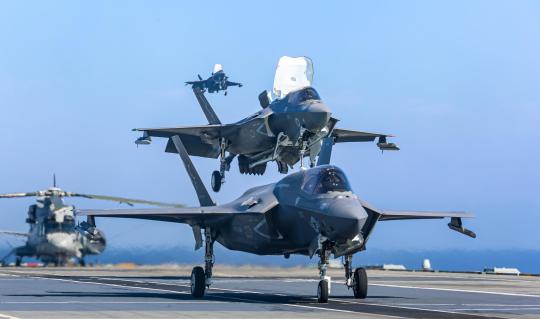
Japan buys aircraft carrier landing system used by the U.S. Navy
Fernando Valduga By Fernando Valduga 09/02/2023 - 14:00 in Military
The Japan Maritime Self-Defense Force (JMSDF) commissioned the Joint Precision Approach and Landing System (JPALS) developed by Raytheon under a foreign military sale contract of $ 8.6 million granted by the U.S. Navy in December 2022.
JPALS, which is a high-integrity differential GPS navigation system based on software and precision landing system, ensures greater safety and greater operational capacity for equipped aircraft.
JPALS allows aircraft to approach and land on ships at sea while operating in all weather conditions and is integrated into the F-35 fighter.

Japan does not have complete aircraft carriers, but is converting two Izumo-class helicopter destroyers into aircraft carriers capable of operating the fifth-generation F-35B fighters that Japan is buying.
JPALS is scheduled to be deployed in JMSDF's JS Izumo in 2024.
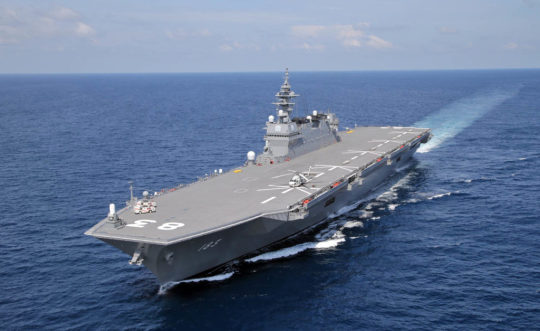
Japan is preparing Izumo to operate with the F-35B.
“The urgency with which this contract was concluded is proof of our commitment to collaborate closely with our JMSDF partners, which is fundamental to the call for the 2022 National Defense Strategy to reinforce the robust deterrence in INDO-PACOM [Indo-Pacific Command],” the commander said. Charles Steele, deputy manager of the PMA-213 JPALS program.
According to the deputy manager of the PMA-213 International Programs program, Casey Edinger, JPALS is a critical facilitator of the improved landing capabilities of the F-35B Joint Strike Fighter for coalition partners.
JPALS is currently being deployed on all U.S. Navy aircraft carriers and amphibious assault ships. Japan joins the United Kingdom and Italy to acquire JPALS, which is currently deployed in HMS Queen Elizabeth of the British Royal Navy and ITS Cavour of the Italian Navy.

JPALS has supported F-35B deployments on U.S. Navy Amphibious LH-class assault ships since 2016 and F-35C deployments on U. Navy aircraft carriers since 2021.
“Taking advantage of existing production resources and historical technical/cost data has optimized the use of declining supply sources, avoided significant price increases and avoided any impact on the deployment schedule,” said John Britt, director of hiring at PMA-213.
Tags: Military AviationJMSDF - Japan Maritime Self Defence Force / Japan Maritime Self Defense Force - Japan NavyJPALSLockheed Martin F-35B Lightning IIaircraft carrier
Fernando Valduga
Fernando Valduga
Aviation photographer and pilot since 1992, he participated in several events and air operations, such as Cruzex, AirVenture, Dayton Airshow and FIDAE. He has works published in specialized aviation magazines in Brazil and abroad. He uses Canon equipment during his photographic work in the world of aviation.
Related news
BRAZILIAN AIR FORCE
FAB: C-130 Hercules is activated to combat forest fires in Chile
09/02/2023 - 19:16
HELICOPTERS
AERO INDIA: Russia hopes to revive the Ka-226T project with India
09/02/2023 - 16:00
MILITARY
Italy considers acquiring new Eurofighters
09/02/2023 - 12:00
MILITARY
Leonardo will update the Avians of the C-27J Spartan from USSOCOM
09/02/2023 - 11:00
BRAZILIAN AIR FORCE
YANOMANI: FAB transports about 100 men of the National Force to Boa Vista
09/02/2023 - 08:41
WAR ZONES
United Kingdom signals sending combat jets to Ukraine. But what would they be?
08/02/2023 - 23:19
homeMain PageEditorialsINFORMATIONeventsCooperateSpecialitiesadvertiseabout
Cavok Brazil - Digital Tchê Web Creation
Commercial
Executive
Helicopters
HISTORY
Military
Brazilian Air Force
Space
Specialities
Cavok Brazil - Digital Tchê Web Creation
2 notes
·
View notes
Video
220920-N-YQ181-1030 by U.S. Pacific Fleet
Via Flickr:
PHILIPPINE SEA (Sept. 20, 2022) Liaison officers from Commander, Escort Division (CCD) 1, Japan Maritime Self Defense Force (JMSDF), discuss surface-force maritime tactics with Lt. Jeffrey Lee from Wells, Maine, assigned to Destroyer Squadron (DESRON) 15, in the sea combat watch floor aboard Navy’s only forward-deployed aircraft carrier USS Ronald Reagan (CVN 76) in the Philippine Sea. Ronald Reagan, flagship of Carrier Strike Group 5, provides a combat-ready force that protects and defends the United States, and supports alliances, partnerships and collective maritime interests in the Indo-Pacific region. (U.S. Navy photo by Mass Communication Specialist 2nd Class Askia Collins)
0 notes